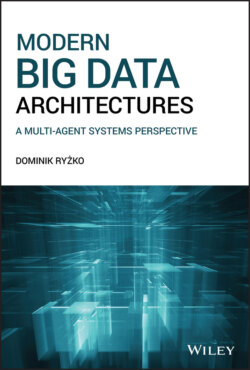Читать книгу Modern Big Data Architectures - Dominik Ryzko - Страница 11
1.4 Book Structure
ОглавлениеThe book is organized as follows. Chapter 2 discusses how major paradigms and concepts have changed over the last few decades, leading to the current landscape. Specifically we will analyze how the evolution of IT architectures influenced storage and analytics of the data. We will also look at the shift of paradigms in database systems, the growing role of the cloud, the Internet, and the IoT. Also the concepts of an agent and an actor are introduced. We conclude by discussing how all these trends led to the rise of big data.
In Chapter 3 we look at where the data comes from in the big data setups. We start with the Internet as the most commonly available data source today. Then we iterate over various branches of science and industry looking at how much data they generate and what is specific about each of them. Finally, the IoT as the fast growing source of huge data streams is described.
Once we are familiar with the data sources, the book dives into specific tasks which need to be performed with the use of the data. Chapter 4 looks at the most important challenges that research and industry is working on in the big data area. This covers recommender systems, search, real time bidding, as well as multiple other topics.
Cloud computing is discussed in Chapter 5. It deserves a separate chapter as a major trend shaping the creation of the next generation of information systems. We look at the advantages and challenges of utilizing cloud resources and how it enables the building of scalable, distributed big data systems. The means for efficient cloud management both in VM and container based setups are described.
In Chapter 6 several big data architectures are presented. We start with fundamental computational models and move towards more complex setups. This includes among others Lambda and Kappa architectures, which have recently emerged as important design patterns for building scalable big data processing and analytics. A separate section is devoted to stream processing.
The means for data analytics and building machine learning models are the subject of Chapter 7. The role of SQL versus other forms of ad-hoc interaction with the data is analyzed. Tools and architectures for providing SQL capabilities in noSQL environments are analyzed. We look at frameworks and tools for efficient building, deploying, and testing of machine learning models.
Geographically distributed systems are the topic of Chapter 8. We will take a look at how the latest trends driven by mobile computing and the IoT led to the emergence of edge and fog computing as new paradigms for extending the cloud towards the distributed elements of the cyber-physical systems.
The work is closed by Chapter 9 with a summary and conclusions. References to the literature complete the volume.
